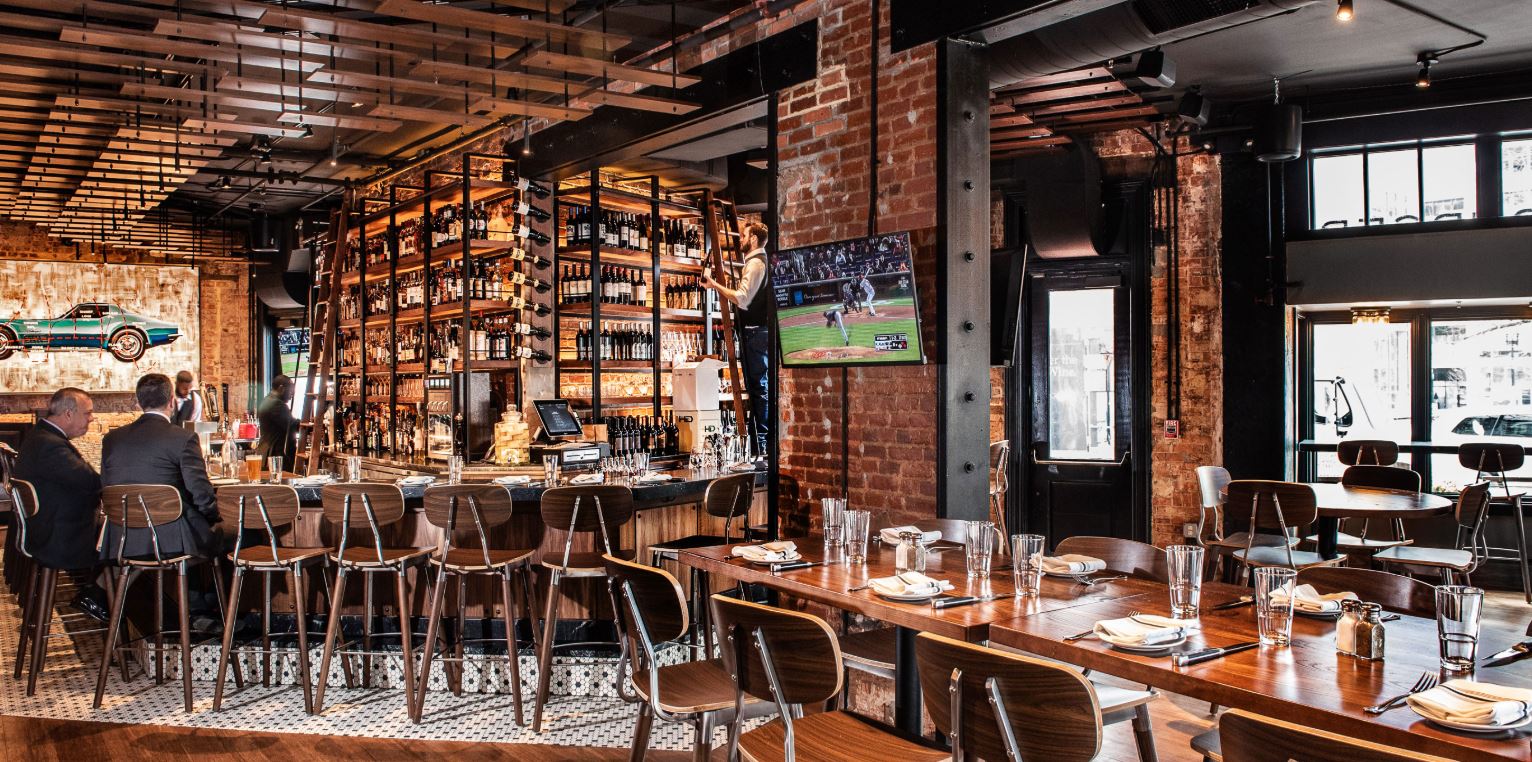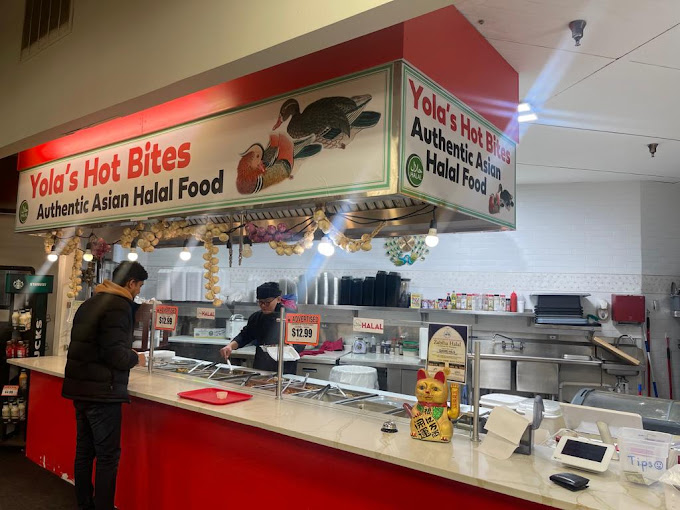Asian Fusion Restaurant: An Unique Dining Experience in the Heart of Islamabad
Savor Genuine Oriental Food With a Pan-Asian Twist for a Culinary Adventure
Starting a cooking journey via genuine Oriental food, improved with a Pan-Asian spin, supplies an one-of-a-kind possibility to check out the rich tapestry of flavors that specify the area's varied culinary traditions. This experience invites you to appreciate the exquisite equilibrium of tastes-- pleasant, salted, spicy, and sour-- balanced by aromatic natural herbs and flavors. Think of the innovative blend of Thai curry and ramen or the unforeseen delight of sushi burritos. As you contemplate these attracting recipes, think about the social narratives and historical impacts that shape them, each bite using a tale waiting to be discovered.

Exploring Pan-Asian Flavors
In the realm of global gastronomy, Pan-Asian food stands out for its remarkable variety and the unified interplay of tastes from different Asian cultures. This cooking technique commemorates the abundant traditions and unique ingredients discovered throughout the continent, creating a tapestry of tastes that is both fascinating and rewarding. Key to Pan-Asian cuisine is its capability to balance contrasting tastes-- pleasant, salty, spicy, and sour-- while highlighting the quality and quality of each component.
From the umami-rich soy sauce of Japan to the fiery chili peppers of Thailand, Pan-Asian cuisine supplies a comprehensive combination of flavors. These aspects are typically incorporated in inventive ways, improving meals with layers of intricacy. For example, the usage of great smelling natural herbs such as lemongrass and cilantro, usual in Vietnamese and Thai food, includes a refreshing brightness to dishes, while the incorporation of coconut milk supplies a creamy, rich structure.
The emphasis on fresh fruit and vegetables and aromatic flavors guarantees that each meal is not just a banquet for the palate however also for the detects. Pan-Asian cuisine invites restaurants to get started on a culinary journey, discovering the vast and differed landscapes of Eastern gastronomy with every bite.
Combination Meals to Try
While Pan-Asian food is commemorated for its typical tastes, the modern cooking landscape is significantly welcoming combination dishes that blend these traditional aspects with impacts from various other regions. This cutting-edge technique not only honors the abundant heritage of Oriental cookeries yet likewise presents novel preference experiences that attract contemporary palates.
An archetype of such a blend meal is the Korean-Mexican taco, where seasoned bulgogi beef is covered in a cozy tortilla, topped with kimchi and a zesty gochujang-infused salsa. This mix marries the bold, full-flavored flavors of Korea with the dynamic, fresh aspects of Mexican food. Similarly, sushi burritos have obtained popularity, integrating the delicate virtuosity of Japanese sushi with the hearty, hand-held ease of a burrito, commonly featuring combination active ingredients like tempura shrimp and avocado with a drizzle of wasabi mayo.
An additional significant recipe is Thai curry ramen, which infuses the luscious, fragrant flavors of Thai curry right into the comforting brew of standard Japanese ramen, creating a harmonious mix that tantalizes the senses. These combination meals prolong past mere uniqueness; they represent a cooking discussion in between cultures, urging expedition and technology on the planet of Pan-Asian cuisine.
Necessary Active Ingredients and Flavors
To truly appreciate Pan-Asian food, one must recognize the important active ingredients and flavors that create its foundation. This varied culinary design attracts from an abundant tapestry of Eastern customs, using a harmonious mix of structures and flavors. Trick ingredients include soy sauce, fish sauce, and oyster sauce, which give a mouthwatering umami deepness necessary to Eastern meals. Complementary to these are rice vinegar and mirin, lending a delicate level of acidity and sweet taste.
Aromatic components are crucial, with ginger, lemongrass, and garlic being ubiquitous across different Pan-Asian dishes. These ingredients give an aromatic base that improves the intricacy of flavors. Seasonings such as celebrity anise, cardamom, and cinnamon present heat and personality, echoing influences from regions like China and India.

Cooking Techniques and Tips
Understanding the art of Pan-Asian food needs knowledge with its distinctive food preparation techniques, each adding to the lively tapestry of tastes this culinary practice is commemorated for. Central to these methods is the stir-fry, a quick food preparation method that preserves the dietary stability and dazzling shades of ingredients. Utilizing a wok, the stir-fry approach enables even warmth circulation, essential for attaining the characteristic appearance and taste balance of Pan-Asian meals.
An additional fundamental method is steaming, particularly prevalent in Chinese food. This mild method keeps the all-natural tastes and nutrients of active ingredients, making it perfect for fish and shellfish and vegetables. Dumplings, a beloved staple, often benefit from steaming, causing soft, succulent structures.
Cooking, also indispensable, imparts smoky depths to dishes such as Korean bulgogi or Japanese yakitori (asian restaurant isb). This strategy frequently includes marinading ingredients, allowing flavors to permeate deeply prior to cooking over an open flame or hot plate
Last but not least, grasping the art of balancing tastes-- wonderful, sour, salty, bitter, and umami-- is essential. Effectively layering these aspects can raise a dish from regular to phenomenal, providing a complicated and pleasing culinary experience that personifies the significance of Pan-Asian food.
Eating Experiences Worldwide
Around the world, Pan-Asian cuisine supplies an unparalleled eating experience, commemorated for its rich tapestry of flavors and dynamic presentations. click here for info This cooking phenomenon has actually transcended social limits, recording the hearts and tastes buds of food enthusiasts worldwide. In worldwide cities fresh York, London, and Sydney, Pan-Asian restaurants work as melting pots where culinary practices from Thailand, Japan, China, and beyond converge, giving diners with an eclectic mix of meals that highlight the area's variety.
The global charm of Pan-Asian cuisine exists in its capability to use both credibility and advancement. Cooks skillfully wed typical active ingredients such as lemongrass, soy sauce, and miso with contemporary techniques, causing dishes that are both acquainted and refreshingly new. This blend enables diners to begin on a culinary trip that respects heritage while embracing modernity.
In addition, eating experiences are elevated via attentively made atmospheres that show the ethos of Pan-Asian aesthetic appeals. From minimal Japanese-inspired interiors to lively Thai-themed rooms, each restaurant uses a distinct atmosphere that complements the culinary offerings. Consequently, customers are not just eating a meal but partaking in a social experience, making Pan-Asian dining a genuinely worldwide sensation.
Conclusion
The expedition of Pan-Asian cuisine provides a profound understanding of the complex interplay of tastes and cooking practices throughout Asia. By embracing fusion meals such as Thai curry ramen and sushi burritos, the cooking journey not only highlights the versatility of standard ingredients but likewise showcases ingenious modern methods. This gastronomic experience, enriched by cooking techniques and necessary flavors, provides a special chance to appreciate the multiculturalism and cooking artistry that specify Pan-Asian cuisine on a global scale.
Getting started on a cooking trip with genuine Eastern food, enhanced with a Pan-Asian spin, supplies a special possibility to explore the rich tapestry of tastes that define the region's varied cooking practices.In the world of global gastronomy, Pan-Asian cuisine stands out for its impressive diversity and the harmonious interaction of flavors from various Asian societies. Trick to Pan-Asian food is its capacity to stabilize different tastes-- wonderful, salted, spicy, and sour-- while highlighting the quality and high quality of each component.
